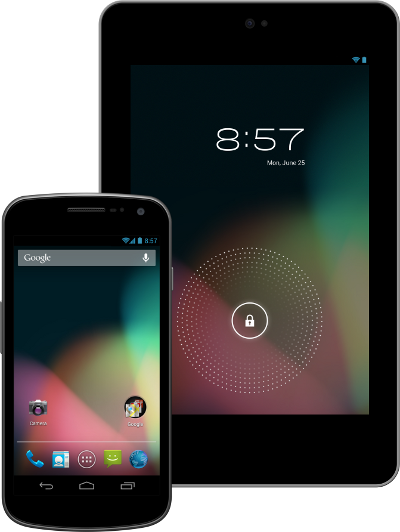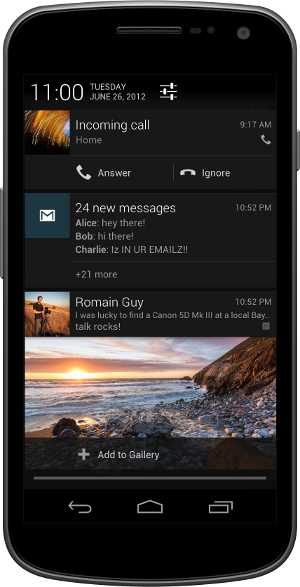Google Unveils Android 4.1 “Jelly Bean”
The upcoming Android 4.1 “Jelly Bean” has been announced and showcased at Google I/O.
The update brings not only a number of new features, but quite a lot of the focus this time around is on performance. Improvements have been made to the very core of Android where it handles input and refreshing the phone screen such that everything feels and works much smoother. All events and display refreshes are now synchronized and triple buffering has been added.
There is good news for Indian users with heavily restricted internet plans. A new feature called “Smart App Updates” means that Android will now be much smarter about application updates and will only now only need to download the bits that have changed.
Another change to applications is the ability for paid apps to be encrypted with a device-specific key. This is essentially DRM to prevent piracy.
The notification system on Android has been overhauled and now supports multiple rich notification styles each with a multiple associated actions. For example a Twitter client will be able to display a rich tweet with an embedded image and the ability to reply to the tweet, favourite it or retweet it all right in the notification area.
Widgets on the home screen will now resize based on the space available and widget developers can take advantage of this to adapt their content accordingly.
A new Android Beam in 4.1 can uses Bluetooth for transferring heavy data such as images, videos etc. The transfer is initiated via NFC just by touching two phones, however the actual transfer uses the higher bandwidth provided by Bluetooth.
A couple of enhancements have also been made to the audio systems in Android 4.1. Android is now capable of multichannel audio output on devices that support it. Android can now also encode and decode 5.1 AAC audio. Audio can also be preprocessed, so apps can get cleaner audio by using noise suppression on the microphone. Audio streams can now also be chained for pause-less playback of albums or in games, and audio recording can also be triggered right after audio playback. Finally, apps can now add UIs for choosing where to send output audio (the phone’s speakers, dock, wirelessly connected media player, or even other phones)
App developers now have access to a number of new APIs and facilities:
- It is now possible to create custom keyboard maps
- Applications can now detect when an a new input device is attached and switch inputs (Games can detect a gamepad / keyboard and use it instead of the touch screen)
- Applications can also learn of the capabilities of the attached device, and use the vibration facilities of the device (again useful for things like gamepads)
- A new Google Cloud Messaging service is available which allows developers to send messages to their users. Messages can contain up to 4kB of data. This is a free service.
- Android 4.1 allows direct low-level access to media codecs and DRM solutions available on the device.
- Applications can detect when they are accessing the network via a metered connection, and reduce bandwidth usage accordingly.
- A new WiFi Direct API allows applications to check which connected WiFi devices support the features it needs. For example a media player app might look for WiFi devices that support media input / output, an eBook reader might look out for a WiFi printer. The application can then list only the devices that support the function it needs to perform.
- Applications can also register services for WiFi. This can allow app-to-app connections across multiple devices over WiFi.
- A new Choreographer API allows applications to better schedule animations with the new vsync timing by synchronizing with each frame.
Android 4.1 will be available soon on Android devices, and the platform image and SDK should be available before that. You can find out more about the new features of Android 4.1 at the Android developer site.


